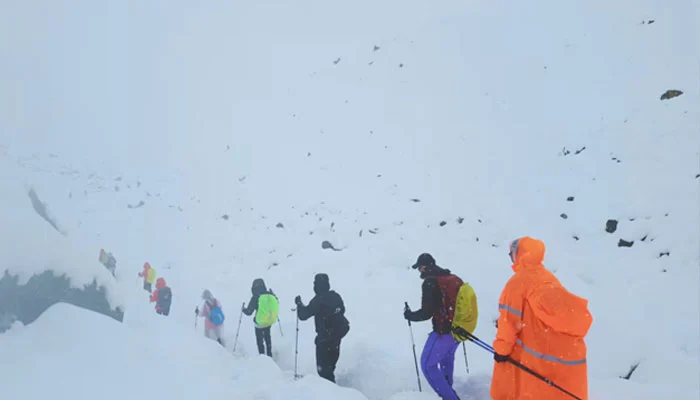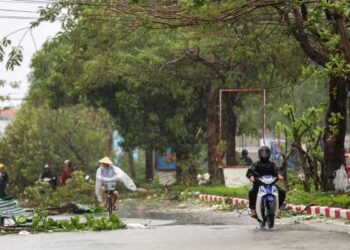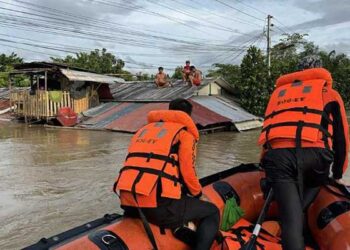Select Language:
Hundreds of hikers stranded near the eastern face of Mount Everest in Tibet have been rescued and brought to safety, according to Chinese state media reports Sunday, amid intense snowfall and rain that battered the Himalayas.
By Sunday, 350 trekkers had arrived in the small town of Qudang, while contacts had been established with over 200 others still unaccounted for, CCTV reported.
Many visitors headed into Karma Valley, which leads to Everest’s eastern Kangshung face, taking advantage of an eight-day National Day holiday in China.
“The weather was extremely wet and cold in the mountains, and hypothermia was a real threat,” said Chen Geshuang, part of an 18-member trekking team that reached Qudang.
“The weather this year is abnormal. Our guide said he had never seen anything like this in October, and it all happened so suddenly.”
Chen’s group descended from the mountains on Sunday after enduring a night of heavy snow, thunder, and lightning, where villagers greeted them after a tense night. Tears filled Chen’s eyes as she accepted their offers of hot tea and warmth.
“Back at the village, we ate and finally felt warm again,” she said.
Local villagers and rescue teams worked tirelessly to clear snow blocking access, with nearly 1,000 people reportedly trapped in the area earlier, according to Jimu News, a state-backed outlet.
Rescue efforts continue as the remaining trekkers are being brought into Qudang in phases, guided and assisted by authorities.
The report did not specify whether guides and support staff with the trekking groups had been located.
’Sleeping little’
Snowfall in the valley, which sits around 13,800 feet (4,200 meters) above sea level, started Friday evening and kept up through Saturday.
“It was snowing and raining every day; we never saw Everest,” said Eric Wen, who survived the ordeal.
His group, consisting of 18 people, decided Saturday night to retreat from their final campsite due to persistent snowfall.
“We had just a few tents, and more than ten of us squeezed into a large tent, hardly sleeping because of how hard it was snowing,” Wen told Reuters.
They had to clear snow from their tents every 10 minutes to prevent collapse. Despite being dressed adequately, two men and a woman suffered hypothermia.
Fortunately, Wen’s team, which included guides and yak handlers, emerged mostly unscathed from the bleak conditions.
North face concerns
Karma Valley, first explored by Western travelers a century ago, remains a largely untouched part of the Everest region. Unlike the dry north face, it is lush with forests and alpine terrain fed by glacial meltwaters from the Kangshung Glacier.
It’s unclear if trekkers near the north face, which is more accessible and popular during October’s clear weather, faced any issues.
Since late Saturday, entry into the Everest Scenic Area has been suspended, following heavy rains that caused landslides and flash floods in Nepal. These disasters blocked roads, destroyed bridges, and resulted in at least 47 fatalities since Friday.
In eastern Ilam district, bordering India, officials reported 35 deaths from landslides, nine people missing after floods, and three killed by lightning strikes.







